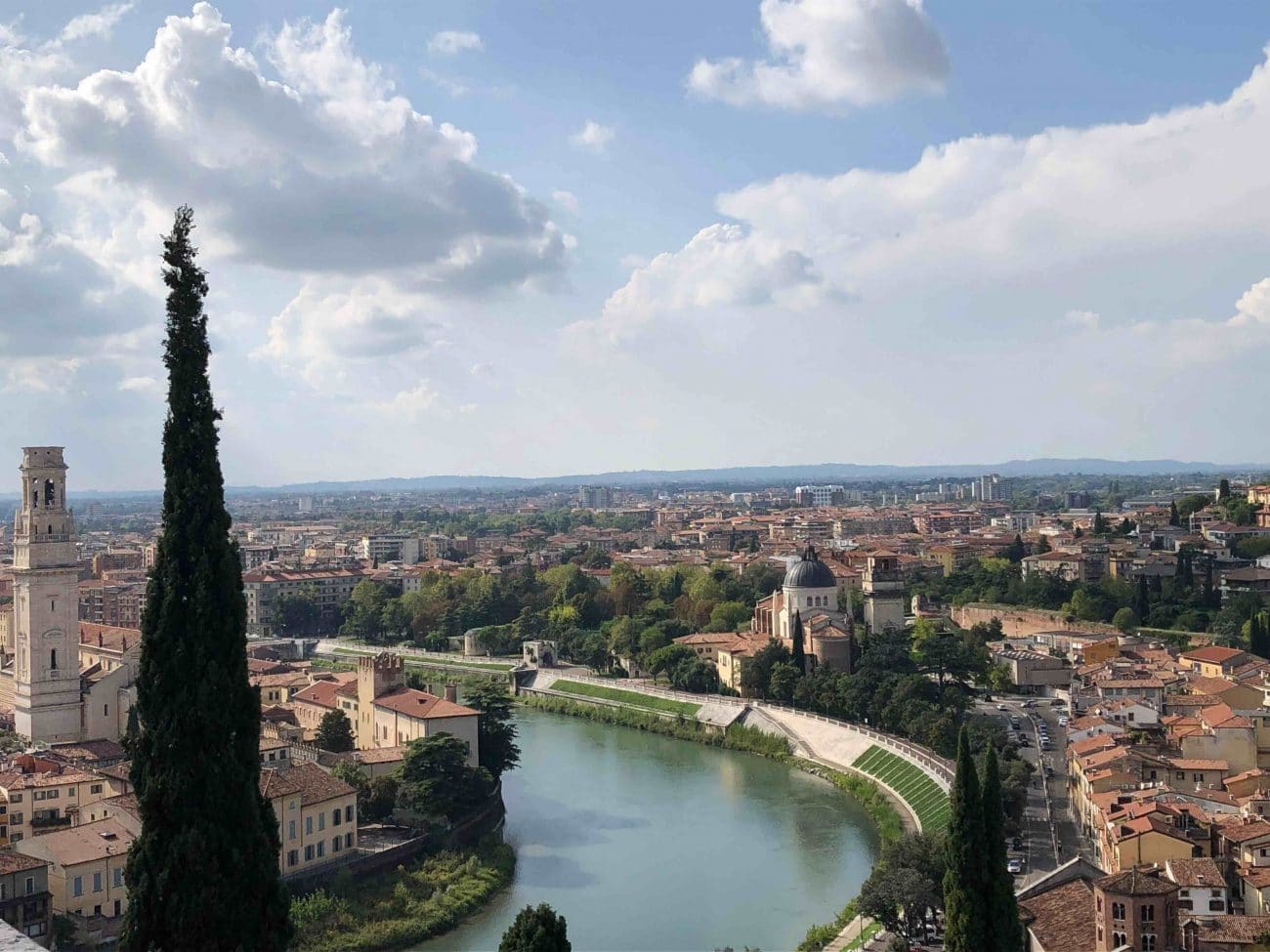I meander along the streets of Verona, Italy’s fourth most-visited city, in search of Juliet’s house. My GPS leads me down quiet streets (clearly not the location I’m looking for), and the famed balcony where a forlorn young teenaged girl welcomed her Romeo. I’m amused that the GPS takes me to a “Juliet B & B.” It seems that in this city, fabled for its R & J inspiration, there are Juliet-inspired themes around every corner. Redirecting myself, I finally find the fabled courtyard and balcony – along with throngs of other literary lovers – hopefully not so star-crossed as Shakespeare’s famous pair. While Juliet’s balcony may draw visitors from all over the world, in truth, there is an endless array of other reasons to love Verona. It’s a city that captures the imagination and a little bit of the heart and soul of Italy.
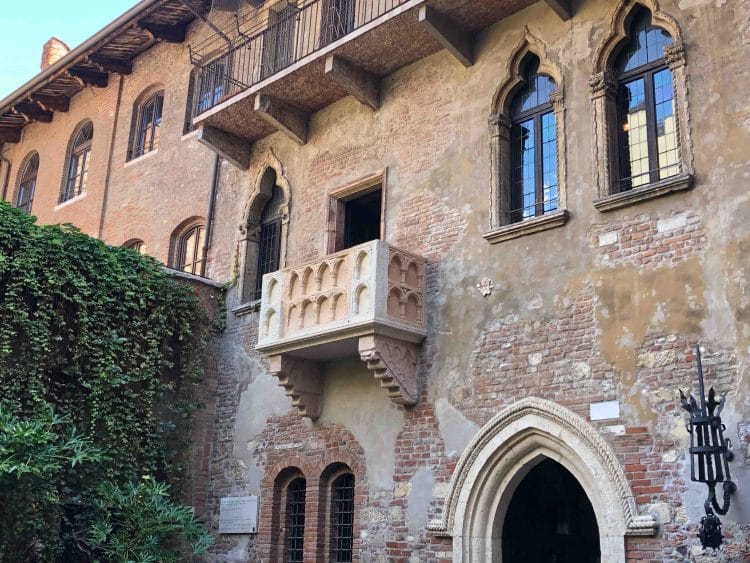
Medieval Magnificence
I begin my adventure by strolling a long, wide promenade that leads to the entrance to the city, and a Coliseum that pre-dates Rome’s by decades. Called the Arena, Verona’s was built as far back as the middle of the 1st century and is considered among the first models for this type of structure. Ranked as the eighth largest coliseum in the Roman Empire, it hosted gladiator matches including battles against wild and exotic beasts.
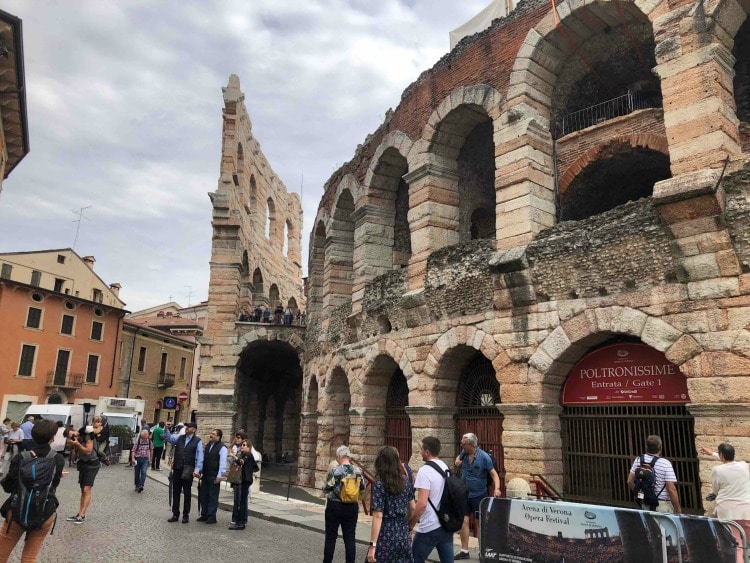
Recently, the Arena has a more contemporary use though, renowned as an opera stage, having hosted Maria Callas in her heyday along with cinema directors like Roberto Rossellini, who created exquisite stage sets against its historical backdrop. All this said, the lines of tourists weaving their way through the Arena are like swarms of busy ants, making me at first wonder if Verona is worthy of its praise. It only takes walking a few blocks away from the Arena to discover that in fact, yes, it is.
As in most medieval Italian villages, cobblestoned streets wind like the bends of a river, here they mimic the curves of the River Adige, above which seagulls soar, the city’s spires and turrets serving as a theatrical backdrop. I cross Ponte Pietra, an ancient bridge dating to 100 BC, damaged after World War II but rebuilt with original materials. Upon the far banks, I take a funicular up the mountainside for postcard views of Verona and moments of reflection. The magnificent overlook is so worth a visit.
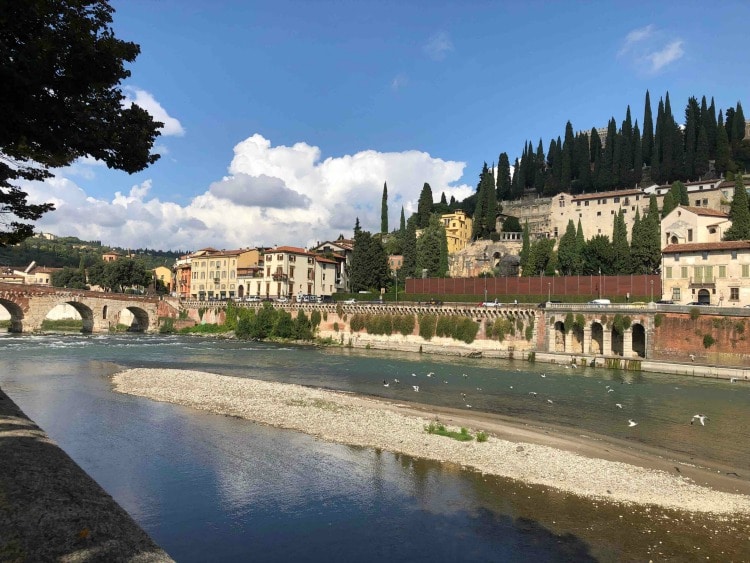
Back at the Duomo (the Cathedral) side of Verona, I stroll Piazza Erbe, or Market Square, once the forum for politics, business, and social life during the days of the Roman Empire. Now, the fountained square is more likely to draw poets and artists. I admire local artifacts among the market stalls and indulge in a savory risotto at an outdoor café. I then stroll a few blocks to Romeo’s medieval brick house, the 13th century home of the Montecchi family (changed to the “Montagues” by Shakespeare) who were rivals to the Dal Cappellos (“the Capulets”). Romeo’s domain is not open to the public, unlike Juliet’s home. Which brings me back to that fabled courtyard.
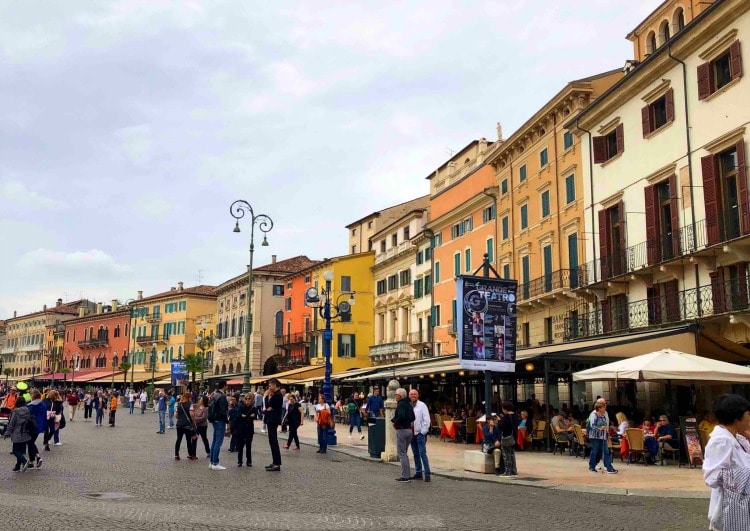
Wherefore Art Thou, Juliet
Juliet’s courtyard is quite lovely, despite the crowds. Looking up at the Gothic-style balcony, I can just imagine the lovely young lady, perhaps in a flowing white gown, locks of long wavy hair cascading over her shoulders as she professes her love for Romeo, on bended knee in the courtyard below. Certainly, the Gothic buildings overflowing with ivy conjure an aura of romance, especially when accentuated by the Shakespearean legend. For a small entrance fee, visitors can enter Juliet’s house and climb to the balcony for photo ops.
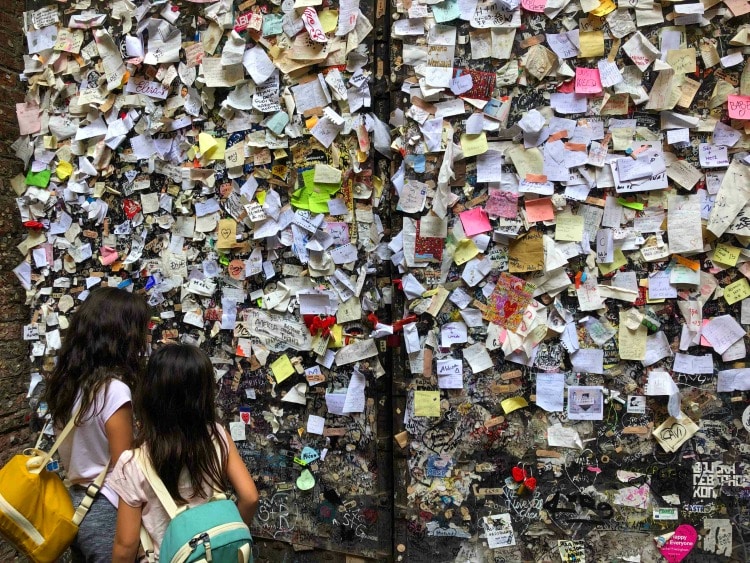
Meanwhile below, the courtyard is a shrine to lovers: there’s a bronze statue of Juliet waiting for posing; visitors can post love notes on one of two large message boards; or add heart-shaped locks to a wall overflowing with them. So well-known is this small corner of the city that love letters arrive here from all over the world, often labeled simply as “Juliet, Verona, Italy.”
Charming Surprises & Style
Not far from that courtyard, I stumble upon the Santa Maria parish cemetery and its intricately carved tombs dedicated to important medieval lords of Verona. These beautiful structures soar skyward, resembling small cathedrals carved of extremely intricate ivory. It’s unusual to see such ornate tombs along city streets, but supposedly the lords wanted residents to feel their great power long after the lords’ demise. This curious but somewhat whimsical corner of Verona is yet another among the city’s many surprises.
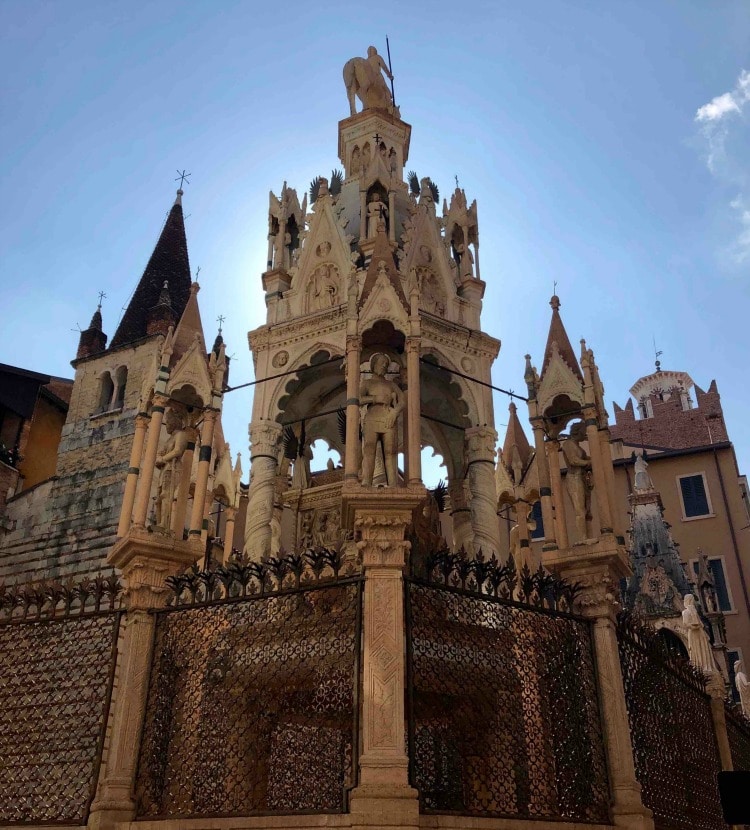
A requisite stop for refueling on my walk is at Venchi, a gelateria said to make the best gelato in all of Italy, and the raspberry tiramisu flavor I choose does not disappoint. Then it’s on to more meandering, stopping to smell the flowers at quaint local shops and admiring heart-shaped red linens personally engraved upon a moment’s notice
At last I hear the church bells ring, reminding me that it’s time to catch a train to Florence, an easy 1 ½-hour away. I make my way past the city’s arches and along the promenade leading to the busy train station that accommodates the numerous day-trippers. Weary from miles of walking, I take out a big heart-shaped cookie bought at a market stall, only to find it broken in half. Perhaps it’s emblematic of this city, a symbol of a romance and a love torn asunder. I leave reflecting my wistful day in the land of Juliet, Verona having captured my heart.
[alert type=white]
Where to Stay:
Due Torri Hotel – Luxury hotel in the historic center of Verona, near to Juliet’s balcony and featuring a panoramic rooftop terrace. Piazza Sant’anastasia 4, Verona; www.hotelduetorri.duetorrihotels.com
Byblos Art Hotel – A former 18th-century villa converted into a luxury hotel that resembles a boutique museum with its beautiful contemporary art collection. Situated a few kilometers from Verona’s city center. Via Cedrare 78, Verona; www.byblosarthotel.com
Where to Eat:
Emanuel Café – Outdoor seating on the plaza, directly across from the historic Arena, with excellent Italian food and hearty portions. Piazza Bra 6/A, Verona; www.emauelcafe.com
Salumeria Gironda – Create your own picnic at this specialty market with tasty cheeses, meats, olives and wine, and then head to the terrace to eat overlooking the river and Ponte Pietra bridge. Via Ponte Pietra 24, Verona; www.salumeriagironda.com
[/alert]

